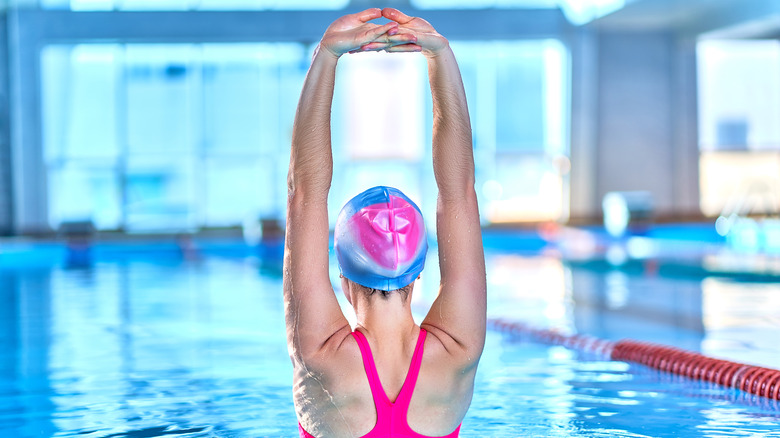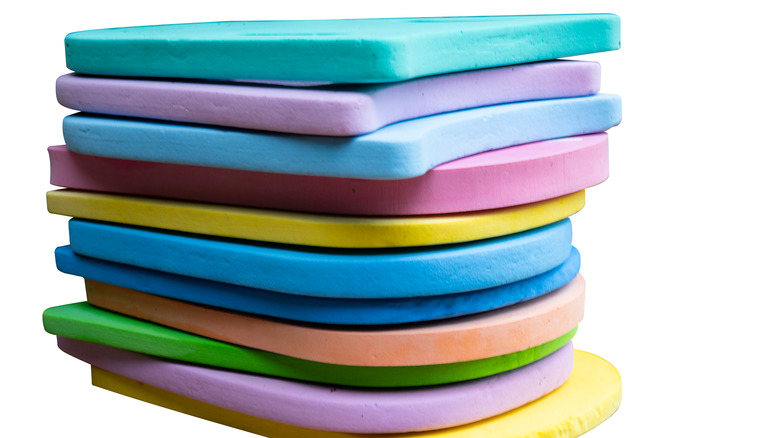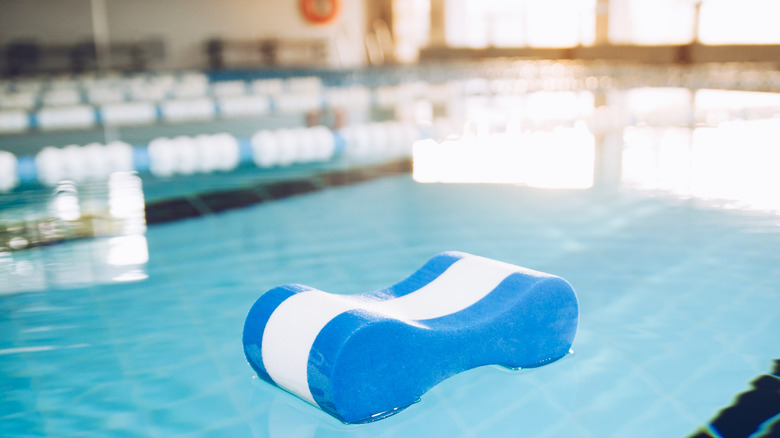How To Build Muscle While Swimming
Swimming requires the body to work in perfect synchronicity, making it the perfect workout for targeting multiple muscle groups (via Play by Decathlon). Swimming is also great for overall health. According to the Centers for Disease Control and Prevention, swimmers have half the risk of death compared to sedentary people. This low-impact exercise can boost mental health, soothe aching joints, and improve our quality of life as we age. Many land-based athletes take to the water to recover from various injuries; professional runners Joan Benoit Samuelson and Mary Decker Slaney took up jogging in the pool to help recover from injury (per Chicago Tribune).
If you've ever tried to run while knee-deep in the water, you know it can be difficult. That's because water is 784 times heavier than air (per The Weather Prediction). Water's density makes it a perfect tool for resistance training. If you take a good look at Olympic gold medalists Michael Phelps and Katie Ledecky, it's obvious that swimming can build up strong muscles. Using some simple pool equipment, you can work on improving your strength without stepping into the gym.
Use a kickboard to build leg muscle
Remember those colorful kickboards from swimming lessons? They're not just good for teaching kids to swim. A standard kickboard can help prop up your upper body while you work your hips and legs kicking through the water. Healthline advises that you hold the front edge of the kickboard and kick your legs behind you. To protect your lower back, be sure to keep your belly from sagging. Since your head is lifted out of the water, you could strain your neck if you spend your entire workout kicking. To avoid this, either use a swim snorkel, or roll onto your back and hug the kickboard while kicking (via Arena Swim).
Ever try holding the kickboard vertically in the water as you swim? This "tombstone drill" requires more force for your core and legs to drive you through the water (per Men's Health). Try kicking one pool length with the kickboard vertical, then return with the kickboard horizontal. The lower you hold the kickboard in the pool, the more difficult it is (via Triathlete). If you want to really challenge your leg muscles while swimming, try using fins for your kickboard sets (via Arena Swim).
Try a pull buoy or paddles to work your shoulders and core
A pull buoy is a flotation device you put between your legs to keep you from sinking. Unfortunately, this also means you don't have your legs to help propel you through the water. This means your arms have to work extra hard to get you to the other end of the pool, and you also have to keep an active core so your belly doesn't sink (via Healthline). Try swimming your typical freestyle stroke with the pool buoy between your ankles or thighs — making sure you keep a good technique in your swim stroke, as swimmer's shoulder often results from overuse or when your technique is poor (via Physiopedia).
If you have a little more experience with swimming, you can add hand paddles to your pull buoy sets to really fire the shoulders. U.S. Masters Swimming suggests removing the wrist straps from the paddles to keep your swim technique intact. With the wrist straps gone, you lose the paddle from your hand if you develop poor form due to fatigue. Be sure to warm up the shoulders before doing a set with paddles.
Although swimming is relatively safe for the muscles and joints, it's important to remain aware of any fatigue that might weaken your swim technique. Healthline warns that it's better to stop your workout than to develop an injury from improper swimming form.



